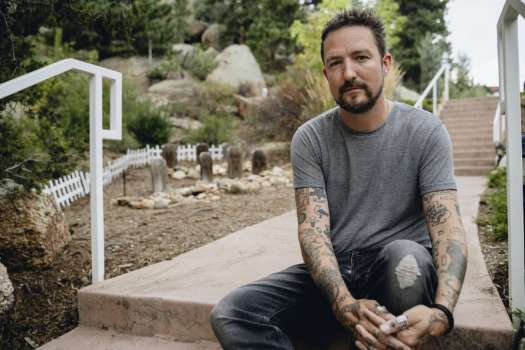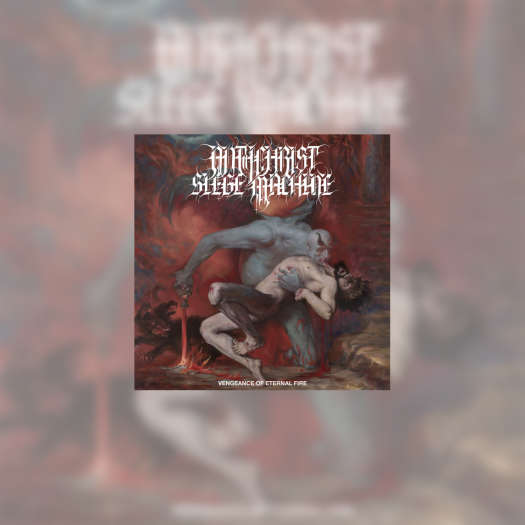While gathering funding for the independent comics anthology Cyclope, Montreal comics impresario Marc Tessier ran into a problem. He applied to the Conseil des Arts et des Lettres du Québec for a comics grant so he could pay the artists in the collection a decent wage for their labour. But not every artist qualified. “Some people were refused because they didn't have enough professional publications,” explains Tessier, Cyclope’s artistic director and all-round driving force, in his spacious, art-filled Montreal apartment.
Instead of abandoning the have-nots to crummy jobs and social assistance, the Cyclope artists, all members of Montreal’s close-knit comics underground, called a meeting. “What we did,” says Tessier “is the people that were excluded, which were lots of women, everybody just cut up their money, and gave it to a pot, so all these people that were rejected by the government, we took them back in. So we were able to pay the other artists who were excluded.” The impromptu grant-sharing scheme, which provided each artist in Cyclope with about $100 a page, demonstrates the maturity that Tessier was counting on to set the collection apart. “I wanted to experiment,” he says. “Cyclope is something different, the stories are a bit more literary.”
Released last February in Quebec, Cyclope bears little resemblance to typical independent comics anthologies. Many of the stories run to eight or ten pages, and bear the coherence and skill of fully realised work. “The purpose of Cyclope,” says Tessier, “was to do longer work people can do something that has more meat.” When I mention one of the many Cyclope stories I liked, Caro Caron’s energetic, raunchy “Gimme 9 Lives, Baby,” Tessier draws my attention to her writing, which he fondly describes as a sort of “kitschy poetry.” “There’s lots of people here who have peculiar voices that say things in their own way through the comics medium,” says Tessier. “What’s interesting about Montreal is that we get English and French, so if you’re open to that, great, and then where does your influence come from? I guess it produces something that’s peculiar to here.”
The work produced by this wide range of influences hasn’t pleased everyone. “A guy gave us a bad review. He said we had horrible drawings, that he couldn't understand anything.” Tessier says the reviewer worked for a comics festival that runs every year in Quebec City. “It's in a shopping mall. It's a long running festival, and it's sort of changing, but before they used to have an artist from Europe do the poster, and they never invited people from around here all these artists in Cyclope, they never get invited.”
With a mainstream culture of bandes dessinées (“drawn strips”) in place, Quebec is probably the only place in Canada where this kind of tribalism could develop over comics. “We get all these French albums from Europe,” says Tessier. “Everybody reads comics here. The libraries are full of graphic novels.” Tessier thinks that the heterogeneity of the art in Cyclope poses a threat to the more established culture of bandes dessinées, which he compares to soap operas. And he won’t give ground to conservative cultural purism: “Cyclope I find very Quebecois. It represents something of the artists here.”
Along with his cheerleading and organising duties, Tessier made another crucial contribution to Cyclope: he and Marc Richard designed the book. A professional photographer and avid book collector (“My girlfriend says I'm a bibliophile.”), Tessier wanted the package to look as good as the content, and produced a gorgeous, delicate image for the cover. The coated paper, full-colour printing and sewn signatures all come courtesy of Cyclope's publisher, the Zone Convective imprint of Mille-Îles, one of Quebec’s largest publishers of children’s books. The pride Tessier clearly takes in the book reflects the pride he feels for the artists inside. “What’s amazing is that for 15 or 20 years, lots of people have stuck it out, even though they didn’t make money. So they’ve continued to produce and produce and produce, and their stuff became more personal, and they sort of created a school of comics. So that’s interesting. I don’t see that anywhere else.”
Instead of abandoning the have-nots to crummy jobs and social assistance, the Cyclope artists, all members of Montreal’s close-knit comics underground, called a meeting. “What we did,” says Tessier “is the people that were excluded, which were lots of women, everybody just cut up their money, and gave it to a pot, so all these people that were rejected by the government, we took them back in. So we were able to pay the other artists who were excluded.” The impromptu grant-sharing scheme, which provided each artist in Cyclope with about $100 a page, demonstrates the maturity that Tessier was counting on to set the collection apart. “I wanted to experiment,” he says. “Cyclope is something different, the stories are a bit more literary.”
Released last February in Quebec, Cyclope bears little resemblance to typical independent comics anthologies. Many of the stories run to eight or ten pages, and bear the coherence and skill of fully realised work. “The purpose of Cyclope,” says Tessier, “was to do longer work people can do something that has more meat.” When I mention one of the many Cyclope stories I liked, Caro Caron’s energetic, raunchy “Gimme 9 Lives, Baby,” Tessier draws my attention to her writing, which he fondly describes as a sort of “kitschy poetry.” “There’s lots of people here who have peculiar voices that say things in their own way through the comics medium,” says Tessier. “What’s interesting about Montreal is that we get English and French, so if you’re open to that, great, and then where does your influence come from? I guess it produces something that’s peculiar to here.”
The work produced by this wide range of influences hasn’t pleased everyone. “A guy gave us a bad review. He said we had horrible drawings, that he couldn't understand anything.” Tessier says the reviewer worked for a comics festival that runs every year in Quebec City. “It's in a shopping mall. It's a long running festival, and it's sort of changing, but before they used to have an artist from Europe do the poster, and they never invited people from around here all these artists in Cyclope, they never get invited.”
With a mainstream culture of bandes dessinées (“drawn strips”) in place, Quebec is probably the only place in Canada where this kind of tribalism could develop over comics. “We get all these French albums from Europe,” says Tessier. “Everybody reads comics here. The libraries are full of graphic novels.” Tessier thinks that the heterogeneity of the art in Cyclope poses a threat to the more established culture of bandes dessinées, which he compares to soap operas. And he won’t give ground to conservative cultural purism: “Cyclope I find very Quebecois. It represents something of the artists here.”
Along with his cheerleading and organising duties, Tessier made another crucial contribution to Cyclope: he and Marc Richard designed the book. A professional photographer and avid book collector (“My girlfriend says I'm a bibliophile.”), Tessier wanted the package to look as good as the content, and produced a gorgeous, delicate image for the cover. The coated paper, full-colour printing and sewn signatures all come courtesy of Cyclope's publisher, the Zone Convective imprint of Mille-Îles, one of Quebec’s largest publishers of children’s books. The pride Tessier clearly takes in the book reflects the pride he feels for the artists inside. “What’s amazing is that for 15 or 20 years, lots of people have stuck it out, even though they didn’t make money. So they’ve continued to produce and produce and produce, and their stuff became more personal, and they sort of created a school of comics. So that’s interesting. I don’t see that anywhere else.”




